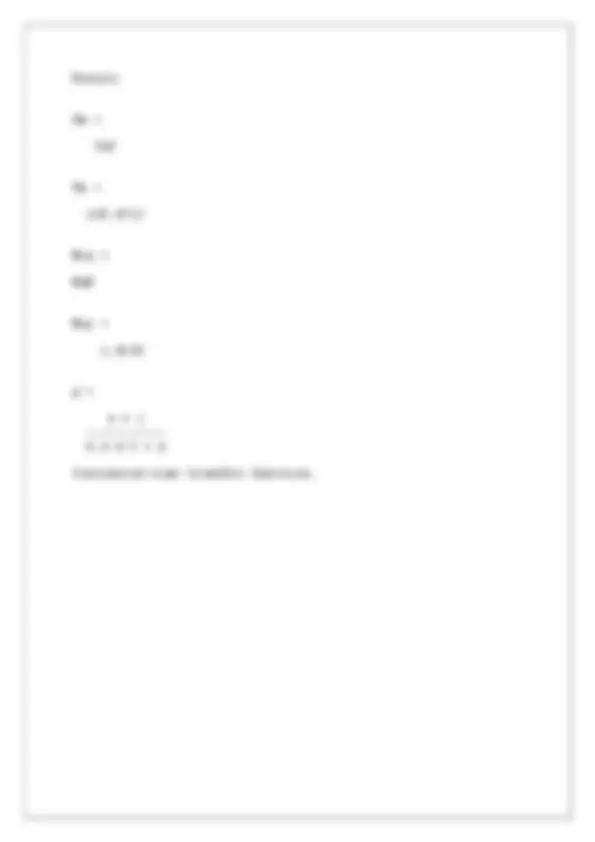



Study with the several resources on Docsity

Earn points by helping other students or get them with a premium plan


Prepare for your exams
Study with the several resources on Docsity

Earn points to download
Earn points by helping other students or get them with a premium plan
Community
Ask the community for help and clear up your study doubts
Discover the best universities in your country according to Docsity users
Free resources
Download our free guides on studying techniques, anxiety management strategies, and thesis advice from Docsity tutors
The theory and instructions for determining the bode plot and controller specification parameters of a 2nd order system using matlab's control system toolbox. The objective is to gain an understanding of frequency response methods and predict a system's behavior in closed-loop.
Typology: Exercises
1 / 3

This page cannot be seen from the preview
Don't miss anything!


Indian Institute of Information Technology, Allahabad Department of Electronics and Communication Engineering
Course Name: Control System Lab
EXPERIMENT NO: 6
DETERMINATION OF BODE PLOT USING MATLAB CONTROL SYSTEM TOOLBOX FOR 2ND^ ORDER SYSTEM AND OBTAIN CONTROLLER SPECIFICATION PARAMETER.
Objective: To determine Bode plot of a 2nd order system II. Frequency domain specification parameters
Materials Required: MATLAB Software.
THEORY: The frequency response method may be less intuitive than other methods you have studied previously. However, it has certain advantages, especially in real-life situations such as modeling transfer functions from physical data. The frequency response of a system can be viewed two different ways: via the Bode plot or via the Nyquist diagram. Both methods display the same information; the difference lies in the way the information is presented. We will explore both methods during this lab exercise. The frequency response is a representation of the system's response to sinusoidal inputs at varying frequencies. The output of a linear system to a sinusoidal input is a sinusoid of the same frequency but with a different magnitude and phase. The frequency response is defined as the magnitude and phase differences between the input and output sinusoids. In this lab, we will see how we can use the open-loop frequency response of a system to predict its behavior in closedloop. To plot the frequency response, we create a vector of frequencies (varying between zero or "DC" and infinity i.e., a higher value) and compute the value of the plant transfer function at those frequencies. If G(s) is the open loop transfer function of a system and ω is the frequency vector, we then plot G( jω) vs. ω. Since G( jω) is a complex number, we can plot both its magnitude and phase (the Bode plot) or its position in the complex plane (the Nyquist plot). The gain margin is defined as the change in open loop gain required to make the system unstable. Systems with greater gain margins can withstand greater changes in system parameters before becoming unstable in closed loop. The phase margin is defined as the change in open loop phase shift required to make a closed loop system unstable.
Example:- Obtain Bode Plot of the system having forward path transfer function Of 𝐺 𝑠 = 1+𝑠 𝑠(1+0.5𝑠) MATLAB Code:
num = [1 1] den = conv([1 0],[0.5 1]) g = tf(num,den); bode(g)